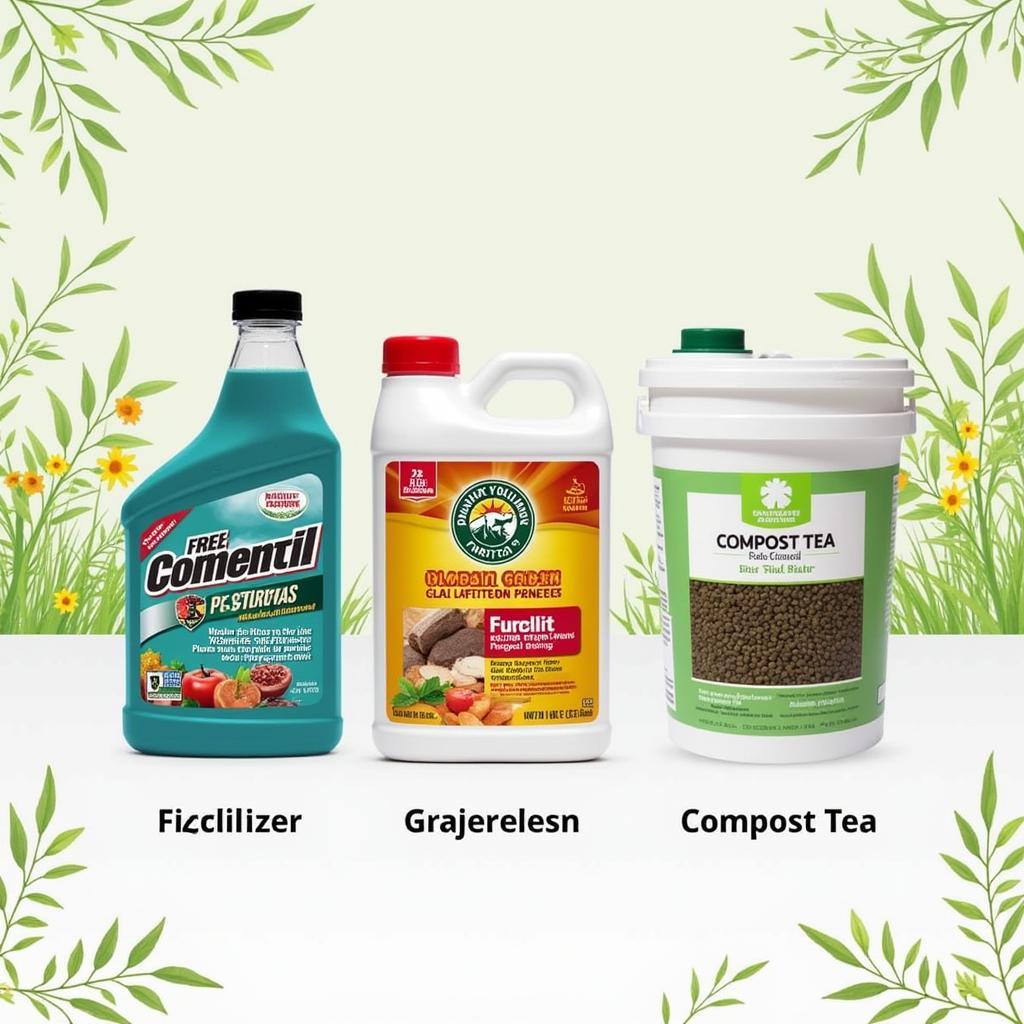Money plants, also known as Pothos or Devil’s Ivy, are popular houseplants cherished for their vibrant foliage and air-purifying qualities. But like all living things, they need the right nourishment to truly thrive. Choosing the right Money Plant Food can be the difference between a lackluster vine and a lush, cascading beauty.
Understanding Your Money Plant’s Nutritional Needs
Just like us, money plants need a balanced diet. This includes essential nutrients like nitrogen (N), phosphorus (P), and potassium (K). Nitrogen fuels leafy growth, phosphorus supports root development, and potassium contributes to overall plant health and disease resistance. Finding a fertilizer with the right NPK ratio is crucial for optimal growth. A balanced ratio like 10-10-10 or 20-20-20 is generally a good starting point. However, you might consider a fertilizer with a slightly higher nitrogen content to encourage more vigorous foliage.
What about plant food for money tree? While money trees and money plants share a similar moniker, they have different nutritional requirements. Be sure to choose a fertilizer specifically formulated for pothos.
Choosing the Right Money Plant Food
There are several types of money plant food available, each with its pros and cons. Liquid fertilizers are easy to use and readily absorbed by the plant. Granular fertilizers provide a slow-release of nutrients, minimizing the risk of over-fertilization. And then there are organic options, like compost tea or worm castings, which offer a more natural approach. Which type you choose depends on your personal preference and how much time you’re willing to invest in feeding your plant.
What are the best food options for my money plant?
- Liquid Fertilizer: Easy to apply and quickly absorbed. Ideal for a quick nutritional boost.
- Granular Fertilizer: Slow-release nutrients offer long-lasting feeding. A convenient, low-maintenance option.
- Organic Options: Compost tea and worm castings provide a natural and sustainable approach to feeding.
 Various types of money plant fertilizer: liquid, granular, and organic options like compost tea.
Various types of money plant fertilizer: liquid, granular, and organic options like compost tea.
How to Fertilize Your Money Plant
Over-fertilizing can be just as detrimental as under-fertilizing. Too much fertilizer can burn the roots and damage the plant. Always follow the instructions on the fertilizer packaging and err on the side of caution. It’s generally better to under-fertilize than over-fertilize. You can find affordable options even if you are looking for costless foods. It’s important to note that fertilizing frequency changes with the seasons. During the growing season (spring and summer), fertilize every 2-4 weeks. During the dormant season (fall and winter), reduce fertilization to once every 6-8 weeks or even stop altogether.
When should I feed my money plant?
Spring and summer are the prime growing seasons, so feed your plant every 2-4 weeks. In fall and winter, reduce to once every 6-8 weeks, or stop altogether.
Signs of Nutrient Deficiency
- Yellowing leaves: This can indicate a nitrogen deficiency.
- Stunted growth: Could be a sign of phosphorus or potassium deficiency.
- Brown leaf tips: May indicate over-fertilizing or inconsistent watering.
Expert Insights
Dr. Emily Carter, a renowned botanist, emphasizes the importance of balanced nutrition for money plants. “Providing the correct nutrients is key to unlocking your money plant’s full potential. A well-nourished plant will be more resilient to pests and diseases and will reward you with vibrant, healthy foliage.”
She also advises against over-fertilizing. “More is not always better when it comes to plant food. Over-fertilizing can harm your plant more than under-fertilizing.”
Conclusion
Choosing the right money plant food and following a consistent fertilizing schedule will ensure your pothos thrives. By understanding your plant’s needs and recognizing the signs of nutrient deficiency, you can keep your money plant healthy, vibrant, and adding beauty to your home. Remember the importance of balanced money plant food for optimal growth. Consider options for food containers wholesale if you need to store a larger quantity of fertilizer.
FAQ
- How often should I water my money plant?
- Can I use tap water for my money plant?
- What kind of pot is best for a money plant?
- How do I propagate a money plant?
- What are common pests that affect money plants?
- How much light does a money plant need?
- Should I prune my money plant?
Do you have other questions about gardening in Georgia? You can check our article about the best food plot mix for georgia.
Need help with your money plant? Contact us at Phone Number: 02437655121, Email: minacones@gmail.com or visit us at 3PGH+8R9, ĐT70A, thôn Trung, Bắc Từ Liêm, Hà Nội, Việt Nam. We have a 24/7 customer service team.